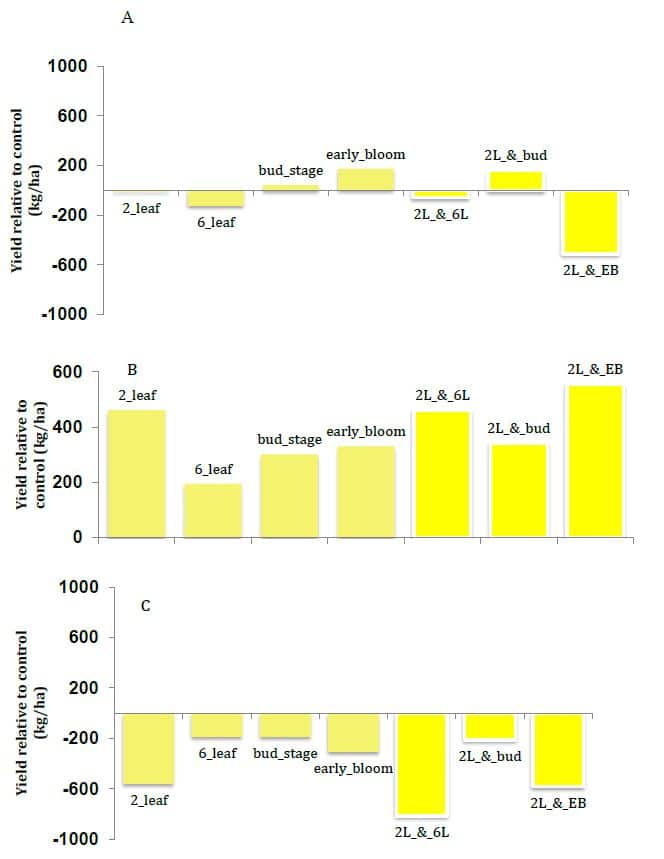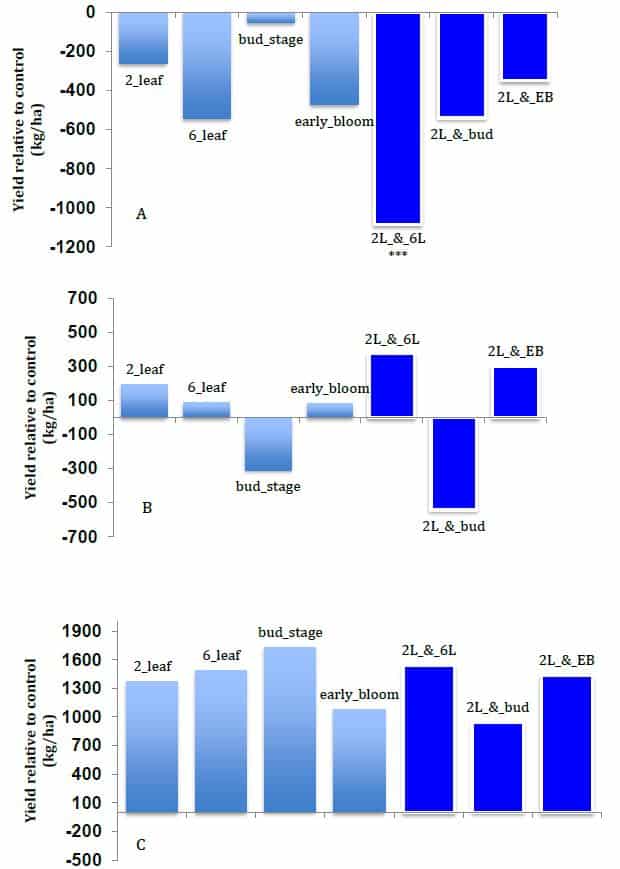Key Result
Stay consistent with on-label applications of glyphosate as any off-label applications are risky. If producers are forced to make late applications due to inclement weather, they must weigh the perceived yield loss due to emerged weeds against the potential for sizeable reductions in yield before applying herbicides late in canola crops.
Project Summary
Herbicide-resistant (HR) canola has been widely adopted and now dominates the canola market in Canada. Recent concern regarding the tolerance of HR canola crops to late herbicide applications has piqued producer interest, as well as that of agronomists, in the timing of herbicide applications. Although late applications of glyphosate have been shown to have detrimental effects on cotton, soybean, and corn, little is known about the effects of late herbicide applications on canola reproduction, seed set, yield, and quality.


The objectives of this research were to determine:
- The response of HR canola to late and sequential herbicide applications with regard to reproductive ecology, yield, and yield components.
- Differences in crop tolerance among the different HR canola systems in several environments.
- To identify the cause(s) of any reductions in crop tolerance.
Experiments conducted over eight site-years across Alberta and Saskatchewan showed the response of HR canola systems to late herbicide applications was ambiguous. The glyphosate-resistant (RoundUp Ready) system appeared to be impacted more significantly than either the glufosinate-resistant (Liberty Link) or imidazolinone (Clearfield) systems. There is little flexibility in the glyphosate-resistant system for late, off-label applications and these must be avoided whenever possible.
Conclusions
Based on these results, the response of canola to late and sequential applications is highly dependent on HR system. While we generally observed no significant effects on any variable measured in the imidazolinone-resistant system across eight site-years of data, applications made beyond the bolt and 6L stages in the glufosinate-resistant and glyphosate-resistant systems, respectively, have the potential to cause severe yield and economic losses. Despite the lack of differences in some site-years, trends across the other site-years are consistent and show that off-label applications in the glyphosate-resistant system can have substantial impacts on crop yield, yield components, and even seed quality. It is clear that there is little flexibility in the glyphosate-resistant system for late, off-label applications and these must be avoided whenever possible.
The researchers recommend that producers stay consistent with on-label applications of glyphosate as any off-label applications are risky. Nevertheless, producers are sometimes forced to make late applications due to inclement weather and in these circumstances, producers must weigh the perceived yield loss due to emerged weeds against the potential for sizeable reductions in yield before applying herbicides late in canola crops. Moreover, they must be aware that no recourse exists when herbicide applications are made off-label.
However, more research needs to be done to identify thresholds at which yield loss due to weeds exceeds that caused by late herbicide applications.





